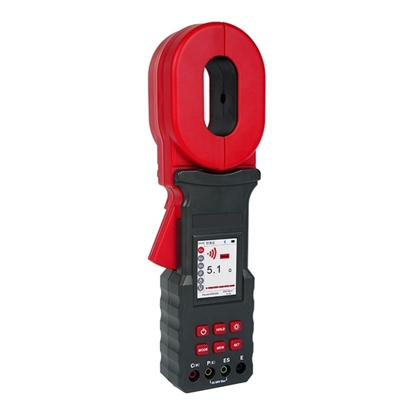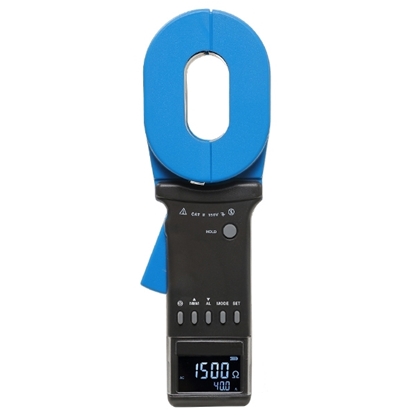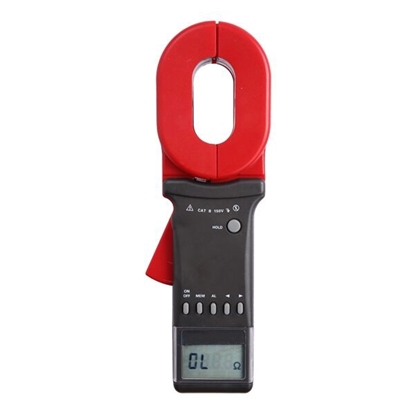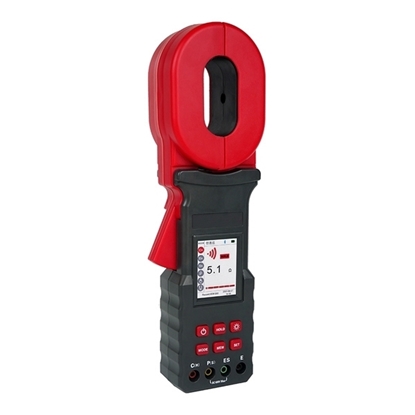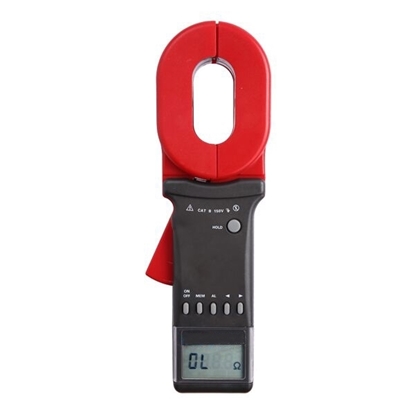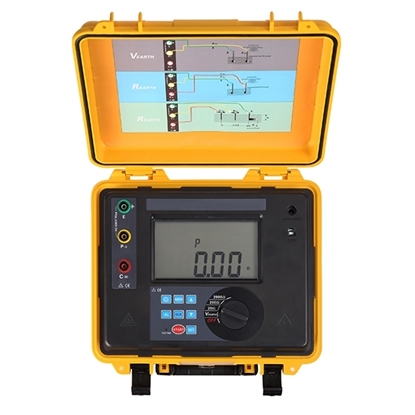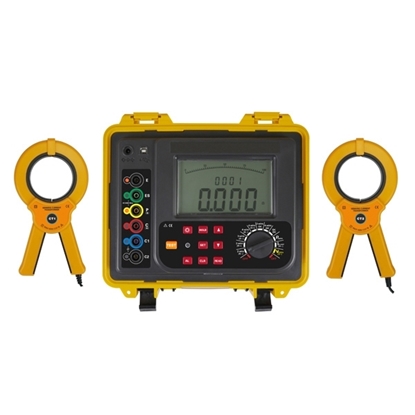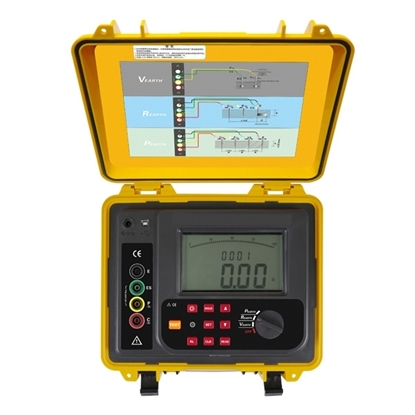Earth Resistance Tester
Clamp Earth Resistance Tester, 0 to 20kΩ
Clamp Ground Resistance Tester, 0.010Ω to 1500Ω
Clamp-on Earth Resistance Tester, 0.010Ω to 200Ω
Clamp-on Ground Resistance Tester, 0 to 200kΩ
Digital Earth Resistance Tester, 0.010Ω to 1200Ω
Digital Earth Resistance Tester, 0.010Ω to 2000Ω
Double Clamp Earth Resistance Tester, 0 to 300kΩ
Soil Resistivity Tester, 0 to 30kΩ
Earth resistance tester for sale online. It is a common instrument for measuring the ground resistance and soil resistivity. ATO provides ground resistance testers for measuring resistance in the range of 0.00Ω~30kΩ. Light and compact, easy to operate, accurate and reliable, digital clamp-on ground resistance tester is designed for measuring earth resistance and loop resistance of electric power, telecommunication, meteorology, oil field, building and industrial electrical equipment.
Types of Earth Resistance Tester
There are several types of ground resistance testers, including clamp-on earth resistance testers, digital earth resistance testers, double clamp earth resistance testers, stake testers, and fall-of-potential testers. Some ground resistance tests also have the function of measuring soil resistivity, which can be used as a soil resistivity tester. Each type has its own unique features and benefits.
Clamp Ground Resistance Tester vs. Digital Earth Resistance Tester
A clamp ground resistance tester and a digital earth resistance tester are similar in that they are both used to measure the resistance of the grounding system, but they differ in the measurement method and accuracy.
A clamp ground resistance tester measures the resistance of the grounding system by detecting the magnetic field generated by the electrical current flowing through the grounding conductor or earth electrode. It is a non-intrusive method that does not require disconnecting the grounding system, making it quick and easy to use. However, clamp ground resistance testers are less accurate than digital earth resistance testers and are affected by the proximity of other electrical conductors.
In general, clamp ground resistance testers are suitable for quick field measurements and troubleshooting, while digital earth resistance testers are better suited for more accurate and reliable measurements in controlled settings. The choice between a clamp ground resistance tester and a digital earth resistance tester depends on the specific application and the level of accuracy required.

Ground Resistance Tester Applications
- Electrical Power Systems: Ground resistance testers are used to measure the resistance of the grounding system in power stations, substations, and transmission lines. These tests help ensure the safety of personnel working in and around these facilities, as well as protect the equipment from electrical surges and lightning strikes.
- Telecommunications: Ground resistance testers are used to test the quality of the grounding system in telecommunications towers and equipment. A good grounding system ensures that the equipment is protected from electrical surges and lightning strikes, and that signal quality is maintained.
- Building Construction: Earth resistance testers are used to ensure the proper installation of the grounding system in buildings. These tests help ensure that the building is safe for occupants and that electrical equipment is protected from electrical surges.
- Industrial Manufacturing: Earth resistance testers are used to test the grounding system in industrial manufacturing plants. A good grounding system is essential in preventing electrical hazards and ensuring the proper functioning of equipment.
- Renewable Energy: Earth resistance testers are used in the installation and maintenance of renewable energy systems, such as solar and wind power systems. These tests help ensure the safety of personnel working with these systems and protect the equipment from electrical surges.
How to Choose an Earth Resistance Tester?
Choosing an ground resistance tester depends on a few factors, including your specific needs and budget. Here are some factors to consider when choosing an earth resistance tester:
- Type of Tester: There are several types of earth resistance testers, including clamp-on testers, stake testers, and fall-of-potential testers. Each type has its own unique features and benefits. Consider which type is most suitable for your application and budget.
- Measuring Range: Make sure that the earth resistance tester you choose has a measuring range suitable for your application. Some testers can measure resistance as low as 0.01 Ohm, while others can measure up to several thousand Ohms.
- Accuracy: Consider the accuracy of the earth resistance tester. You may need a high-accuracy tester if you are working with sensitive equipment or applications.
- Display: Look for an earth resistance tester with a clear and easy-to-read display. Some testers come with a backlit display, which is useful for working in low-light conditions.
- Durability: If you will be using the earth resistance tester in harsh conditions, such as outdoors or in a construction site, consider a tester that is durable and resistant to damage.
- Additional Features: Some earth resistance testers come with additional features such as data logging, USB connectivity, and wireless capabilities. Consider which features are important for your needs.
- Budget: Consider your budget when choosing an earth resistance tester. The price of the tester can vary depending on the type, features, and accuracy.

